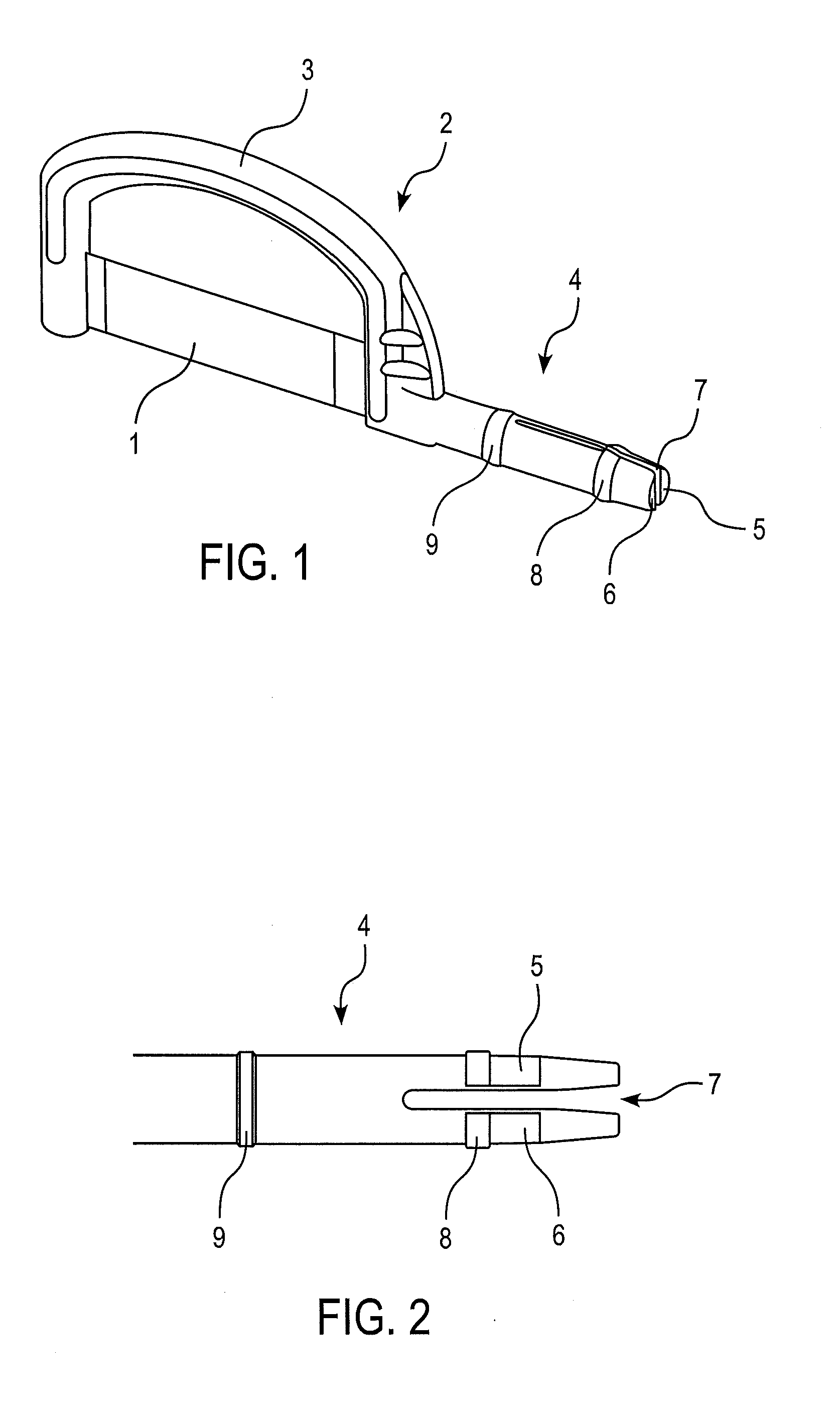Apparatus for removing enamel or debris from a tooth
a technology for removing enamel or debris from teeth, applied in the field of dental or orthodontics, to achieve the effect of reducing problems and disadvantages
- Summary
- Abstract
- Description
- Claims
- Application Information
AI Technical Summary
Benefits of technology
Problems solved by technology
Method used
Image
Examples
Embodiment Construction
[0020]According to the invention as shown in FIG. 1, a first embodiment of an apparatus for removing enamel or debris from a tooth includes a blade 1 having an abrasive surface on at least one side of blade 1 or abrasive surfaces on both sides of blade 1. The apparatus further comprises a handle portion 2. Blade 1 is mounted to a support portion 3 of handle portion 2. Support portion 3 is bracket-shaped and comprises first and second bracket ends to which blade 1 is connected with its respective end portions. Blade 1 can be mounted to support portion 3 in a moulding process or, alternatively, it can be mounted to support portion 3 with separate mechanical fasteners (not shown). A shank 4 is integrally formed in one piece with support portion 3 with the proximal end of shank 4 being connected to one bracket end. Shank 4 comprises a flexible shank portion having two flexible elements 5,6 separated by a slit 7. Slit 7 extends axially from the distal end of shank 4 along the flexible sh...
PUM
 Login to View More
Login to View More Abstract
Description
Claims
Application Information
 Login to View More
Login to View More - R&D
- Intellectual Property
- Life Sciences
- Materials
- Tech Scout
- Unparalleled Data Quality
- Higher Quality Content
- 60% Fewer Hallucinations
Browse by: Latest US Patents, China's latest patents, Technical Efficacy Thesaurus, Application Domain, Technology Topic, Popular Technical Reports.
© 2025 PatSnap. All rights reserved.Legal|Privacy policy|Modern Slavery Act Transparency Statement|Sitemap|About US| Contact US: help@patsnap.com



